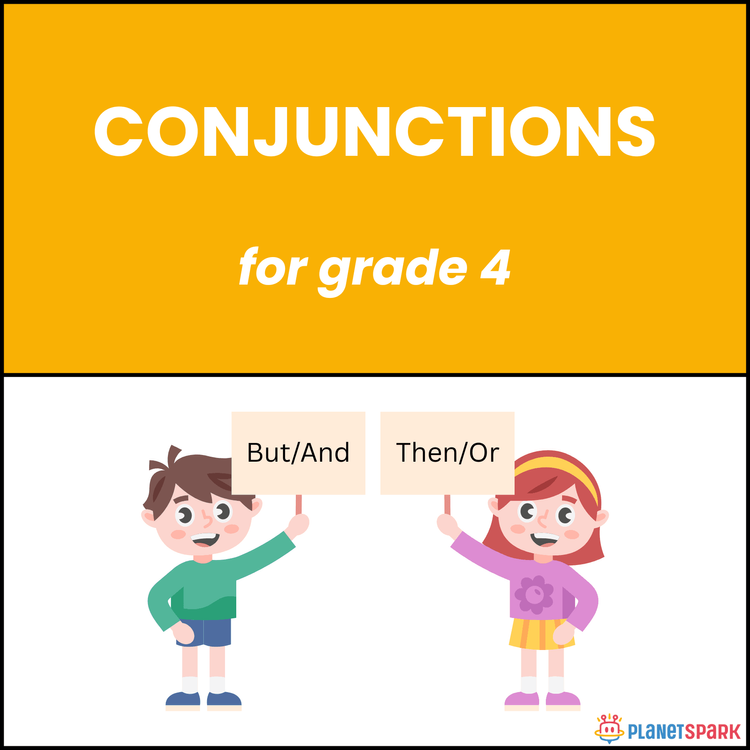Adverb for Class 3: Easy Guide with Examples & Practice

Table of Contents
- Adverb for Class 3: A Simple Explanation for Kids
- Types of Adverb for Class 3 Students with Examples
- How to Identify an Adverb for Class 3 Kids: Easy Tips and Ex
- Why Learning Adverb for Class 3 Students Is Important
- How PlanetSpark Helps Kids Master Adverb for Class 3 and Gra
- Conclusion: Mastering Adverb for Class 3 Made Easy
- Readers Also Read
- FAQs on Adverb for Class 3
Learning grammar is an important step for class 3 students, and understanding an adverb for class 3 is a key part of that journey. For young learners, grasping adverbs can boost their speaking and writing skills, making their language more expressive and fun.
In this blog, we’ll explore adverbs in a simple way that’s perfect for class 3 kids with easy examples, tips, and practice ideas. PlanetSpark offers interactive grammar courses designed especially for kids to master concepts like adverbs with ease and confidence.
Adverb for Class 3: A Simple Explanation for Kids
An adverb is a word that tells us more about an action (verb), a describing word (adjective), or even another adverb. It answers questions like how?, when?, where?, or how often? something happens. Learning adverbs helps class 3 students make their sentences more interesting and clear.
For example, in the sentence “She sings beautifully,” beautifully is an adverb because it tells us how she sings. In “He arrived early,” the word early tells us when he arrived.
This guide on adverb for class 3 will help kids understand different types of adverbs with simple examples and fun exercises.
Ready to make grammar fun? Book a free demo class with PlanetSpark today!
Types of Adverb for Class 3 Students with Examples
When learning about an adverb for class 3, it’s important to understand that adverbs come in different types. Each type explains something different about the action or description in a sentence. Below are the main types of adverbs that class 3 students should know, explained in detail with examples to help kids grasp their meanings clearly.
1. Adverbs of Manner: How Something Happens
Adverbs of manner tell us how an action is done. These adverbs describe the way or style in which something happens or is performed. For example, when you say “She runs quickly,” the adverb quickly explains the manner of running, it tells us that she runs fast. Adverbs of manner often end with -ly, but not always.
More examples:
“He sings beautifully.” (How does he sing? Beautifully.)
“The cat moved silently.” (How did the cat move? Silently.)
“They worked hard.” (How did they work? Hard.)
These words help make sentences more vivid and interesting by giving details about the action.
2. Adverbs of Time: When Something Happens
Adverbs of time tell us when an action happens or happened. They give information about the timing of an event or action, helping the listener or reader understand whether it took place in the past, present, or future.
Examples include:
“She will arrive tomorrow.” (When will she arrive? Tomorrow.)
“I went to school yesterday.” (When did I go to school? Yesterday.)
“We are leaving now.” (When are we leaving? Now.)
“He often visits his grandparents.” (When does he visit? Often: showing frequency as well.)
Knowing adverbs of time helps class 3 students place actions clearly in time, which is very useful in telling stories or describing events.
3. Adverbs of Place: Where Something Happens
Adverbs of place tell us where an action takes place. They describe the location or direction related to the verb in the sentence. These adverbs help paint a clearer picture of the scene.
Examples:
“The children are playing outside.” (Where are the children playing? Outside.)
“Please come here.” (Where should you come? Here.)
“The birds flew everywhere.” (Where did the birds fly? Everywhere.)
“He looked around.” (Where did he look? Around.)
By using adverbs of place, class 3 students can describe locations and directions more effectively.
4. Adverbs of Frequency: How Often Something Happens
Adverbs of frequency tell us how often an action happens. They help us understand whether something happens all the time, sometimes, or rarely.
Common adverbs of frequency: always, never, sometimes, usually, often, rarely
Examples:
“She always does her homework on time.” (How often? Always: every time.)
“They never eat sweets before dinner.” (How often? Never: not at all.)
“I sometimes go to the park after school.” (How often? Sometimes: on some days.)
“He usually wakes up early.” (How often? Usually: most of the time.)
Adverbs of frequency help kids explain habits and routines clearly in their sentences.

Curious how PlanetSpark can help your child master adverbs? Try a free demo session!
5. Adverbs of Degree: How Much or To What Extent
Adverbs of degree explain how much or to what extent something happens. These adverbs modify adjectives, verbs, or other adverbs by showing the intensity or degree of the action or quality.
Examples include:
“The water is very cold.” (How cold? Very cold.)
“She was too tired to continue.” (How tired? Too tired: more than enough.)
“He almost won the race.” (How close? Almost won: nearly but not quite.)
“The movie was quite interesting.” (How interesting? Quite: to a fair extent.)
Learning these adverbs helps class 3 students express their thoughts and feelings in a more detailed way.
By understanding these different types of adverb for class 3, kids can write and speak with more clarity and creativity. Using adverbs correctly makes their sentences more descriptive and helps their language come alive.
How to Identify an Adverb for Class 3 Kids: Easy Tips and Examples
Knowing how to spot an adverb for class 3 students is an important step in mastering grammar. Adverbs can appear in many places in a sentence, and they often answer questions like how?, when?, where?, or how often? To help class 3 kids identify adverbs easily, here are some simple tips and examples.
Tip 1: Look for Words That Describe Actions
Adverbs usually describe verbs, the action words in a sentence. Ask yourself, How is the action happening? or When did it happen? The answer is often an adverb.
Example:
“The boy runs fast.” (How does he run? Fast.)
“She sings loudly.” (How does she sing? Loudly.)
“They arrived early.” (When did they arrive? Early.)
Tip 2: Check If the Word Answers When, Where, or How Often
If a word answers the questions when? (time), where? (place), or how often? (frequency), it is likely an adverb.
Example:
“We will leave soon.” (When?)
“Come here.” (Where?)
“He always helps his friends.” (How often?)
Tip 3: Look for Words Ending in “-ly”
Many adverbs end with -ly, which can be a quick clue. But remember, not all adverbs end this way.
Example:
“She dances gracefully.”
“He spoke quietly.”
But also: “They work hard.” (Adverb without “-ly”)
Tip 4: Try Removing the Word. Does the Sentence Still Make Sense?
Sometimes, removing an adverb changes the meaning or leaves the sentence incomplete. This helps confirm if a word is an adverb.
Example:
“He ran quickly.” → Without quickly: “He ran.” (Still makes sense but less detailed.)
“She often visits.” → Without often: “She visits.” (Meaning changes, frequency lost.)
Practice Exercise
Find the adverbs in the following sentence:
“Yesterday, the children played happily outside.”
Answer: Yesterday (when), happily (how), outside (where)
By using these tips, class 3 students can get better at finding and using adverbs, making their sentences more expressive and fun to write!
Start your child’s grammar journey with a no-cost, no-obligation demo class. Book now!
Why Learning Adverb for Class 3 Students Is Important
Learning about adverb for class 3 helps kids make their sentences more fun and clear. Adverbs add details about how, when, or where things happen, turning simple sentences into exciting ones!
For example, “He runs” becomes “He runs fast.” See the difference? That’s the power of adverbs!
Knowing adverbs helps kids:
Speak and write with more confidence
Make stories and sentences more interesting
Understand what they read better
Mastering adverbs at this stage makes learning English easier and more enjoyable for class 3 students.

How PlanetSpark Helps Kids Master Adverb for Class 3 and Grammar Skills
At PlanetSpark, we understand that learning grammar, like adverb for class 3, can be tricky but fun with the right guidance. Our interactive online classes make it easy for kids to grasp adverbs and other important grammar concepts.
Here’s how PlanetSpark supports your child:
Live sessions with expert teachers who explain adverbs in simple, fun ways
Interactive exercises and games that keep kids engaged while practicing
Personalized feedback to help your child improve quickly
Flexible classes that fit your family’s schedule
With PlanetSpark, your child will build a strong grammar foundation, boost confidence, and enjoy learning English every step of the way.
Conclusion: Mastering Adverb for Class 3 Made Easy
Learning about adverb for class 3 helps kids add more detail and fun to their sentences. By understanding how adverbs describe actions, times, places, and more, class 3 students can become confident writers and speakers. With practice and the right guidance, like the support from PlanetSpark, mastering adverbs becomes simple and enjoyable. Keep practicing, and watch your child’s language skills grow every day!
Readers Also Read
Explore these engaging resources to further enhance your child's grammar skills:
Exploring the 7 Types of Pronouns: A Fun Grammar Lesson
Dive into the world of pronouns with this comprehensive guide, perfect for young learners eager to understand how words like 'he,' 'she,' and 'they' function in sentences.Prefixes and Suffixes: A Complete Grammar Guide for Kids
Learn how adding prefixes and suffixes can change the meaning of words, expanding vocabulary and enhancing language skills.
FAQs on Adverb for Class 3
Q1: What is an adverb for class 3?
An adverb for class 3 is a word that describes how, when, where, or how often an action happens. It adds more detail to sentences.
Q2: How can class 3 kids identify adverbs in sentences?
They can look for words that answer questions like how? when? where? or how often? Words ending in “-ly” are often adverbs too.
Q3: Can adverbs describe adjectives?
Yes! Some adverbs can describe adjectives by showing the degree, like “very” or “too.”
Q4: How can parents help kids practice adverbs at home?
Parents can encourage kids to write sentences using different adverbs, play grammar games, or try simple exercises together.
Download Free Worksheets
Personalized Communication Report
Record a video to get a AI generated personalized communication report for your child

Hi There, want to try these
tips for your child with
LIVE with our expert coach?
Let's check your child's
English fluency

